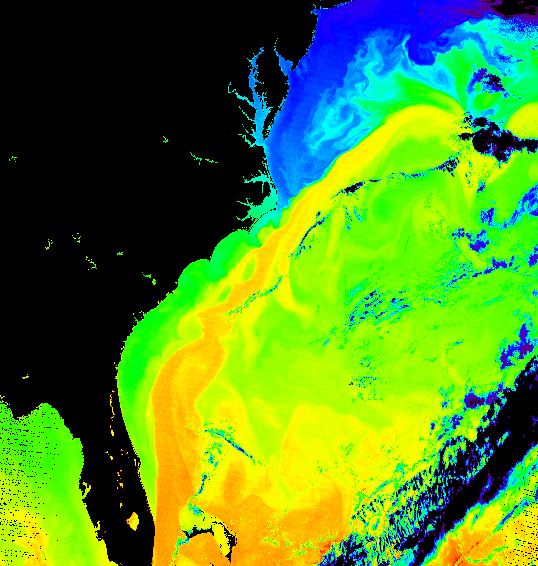Changes in the Gulf Stream over the last 5000 years are destabilising trapped methane over at least 10,000 square kilometres of the US eastern margin, and if this were to be released it could cause abrupt climate changes, according to research published in the journal Nature.
Methane hydrate is a solid form of ice and methane, and is stable at high pressures and low temperatures. They exist within the first few hundred metres of marine sediment in a region known as the Gas-Hydrate Stability Zone, or GHSZ, and represent one of the largest reservoirs of organic carbon on Earth. Sudden release of methane hydrate has been linked to past global climate changes, such as the Palaeocene-Eocene thermal maximum (PETM). Melting gas-hydrates have also been implicated in continental slope failures that cause underwater landslides.
 To investigate the stability of methane hydrates along the American continental shelf, Benjamin Phrampus & Matthew Hornbach at the Southern Methodist University in Dallas, Texas combined seismic data showing the depth of the GHSZ with thermal models. They found that stable zone is deeper than predicted from models based on current ocean temperatures, and suggest that this shows methane-hydrate melting occurring in the sub-seabed. Their results suggest that today's warmer temperatures are destabilizing up to 2.5 gigatonnes of methane hydrate.
To investigate the stability of methane hydrates along the American continental shelf, Benjamin Phrampus & Matthew Hornbach at the Southern Methodist University in Dallas, Texas combined seismic data showing the depth of the GHSZ with thermal models. They found that stable zone is deeper than predicted from models based on current ocean temperatures, and suggest that this shows methane-hydrate melting occurring in the sub-seabed. Their results suggest that today's warmer temperatures are destabilizing up to 2.5 gigatonnes of methane hydrate.
To try to explain this, the authors considered a number of different scenarios, and conclude that the most likely explanation is a change in either the temperature or location of the Gulf Stream - the warm current that flows across the Atlantic.
At present, it's unclear what affect this destabilisation may have, especially as there is some debate over the role of gas-hydrates in continental shelf instability, and predictions are that it could take as much as 5000 years for this methane to escape into the atmosphere. However, this new research highlights the importance of understanding methane hydrates, and points us towards new methods to research other important sites of methane storage where conditions are changing rapidly, such as in the arctic.










Comments
Add a comment